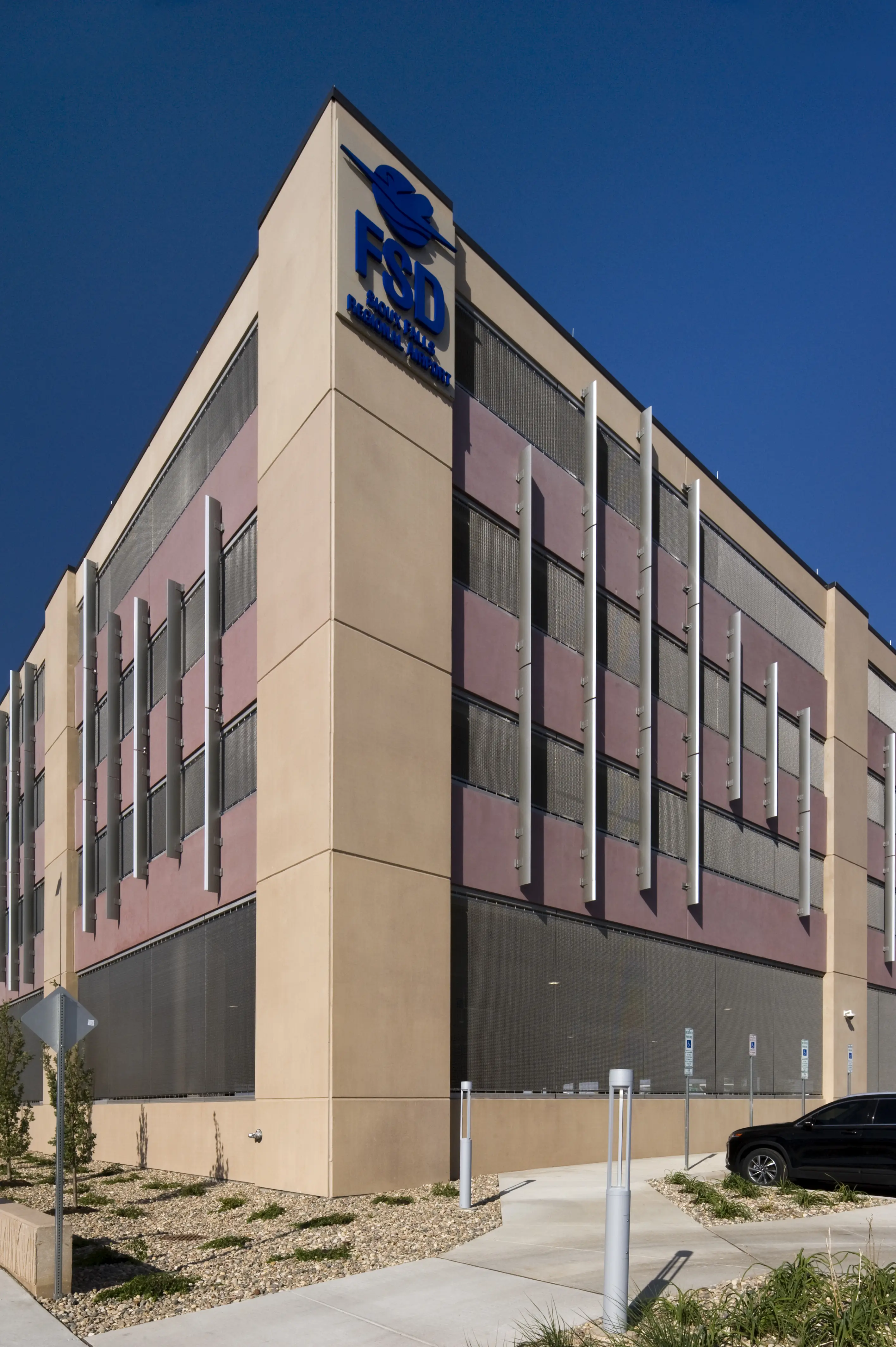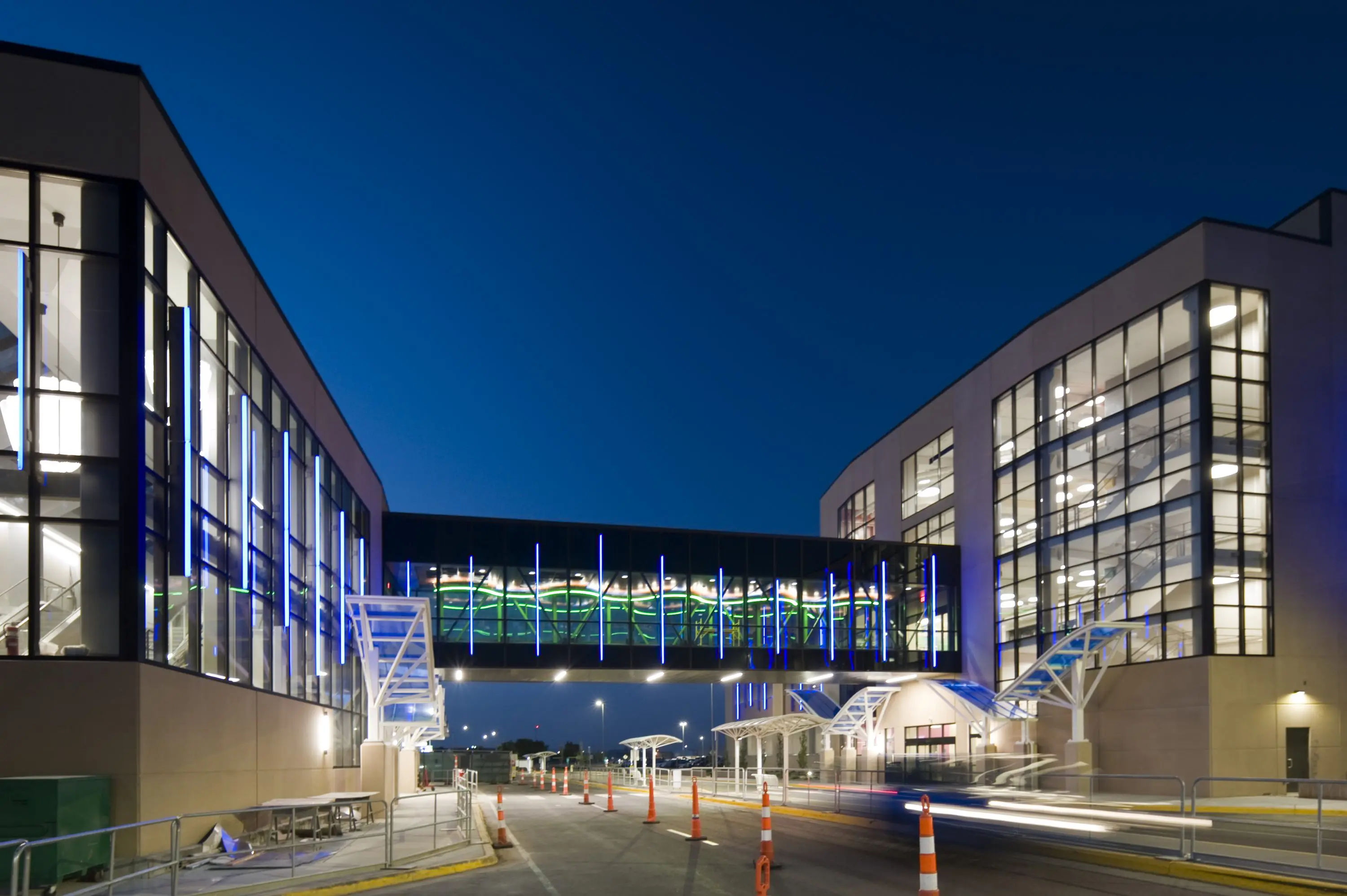The Sioux Falls Regional Airport’s new parking ramp project, aimed at enhancing capacity and passenger experience, showcases the significant role of precast concrete in its design. While the main structural components are cast-in-place concrete, Gage Brothers played a crucial role in delivering the architectural cladding and vertical circulation elements. The architectural precast cladding supplied by Gage Brothers encompasses two primary color schemes that complement the region’s natural aesthetics. The first color, inspired by Sioux Falls’ renowned Quartzite, features a very light sandblast finish. The second, a light buff tone, incorporates a light etch finish, creating visual harmony across the structure.
Beyond the architectural exterior, Gage Brothers’ expertise was integral to the construction of the precast stair towers and the Main Stair Elevator Lobby. These elements, essential for vertical circulation within the parking ramp, consist of robust precast components, including grey structural walls and buff-colored insulated walls. The comprehensive precast solution also featured precast beams, columns, hollowcore planks, and stair units, which contribute to the efficiency and durability of the structure.
The Main Stair Elevator Lobby, a highlight of Gage Brothers’ contribution, provides passengers with convenient access to a second-level skyway that links directly to the airport terminal. This skyway offers a seamless, covered passageway that enhances safety and comfort by allowing travelers to cross traffic effortlessly. The use of precast concrete in this lobby structure ensures long-term resilience and aesthetic appeal, aligning with the project’s modern and functional design goals.
By incorporating Gage Brothers’ precast elements, the Sioux Falls Regional Airport parking ramp benefits from an efficient construction process, superior durability, and cohesive architectural beauty. The use of advanced precast solutions reinforced the airport’s commitment to providing top-notch infrastructure that accommodates the growing needs of travelers.
























 605.336.1180
605.336.1180


